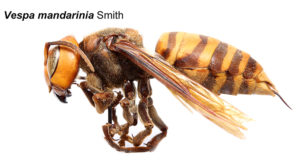
Asian Giant Hornets in Washington State
The news media are reporting that the Asian giant hornet (Vespa mandarinia) has been found in Washington state. This hornet …



El inglés es el idioma de control de esta página. En la medida en que haya algún conflicto entre la traducción al inglés y la traducción, el inglés prevalece.
Al hacer clic en el enlace de traducción se activa un servicio de traducción gratuito para convertir la página al español. Al igual que con cualquier traducción por Internet, la conversión no es sensible al contexto y puede que no traduzca el texto en su significado original. NC State Extension no garantiza la exactitud del texto traducido. Por favor, tenga en cuenta que algunas aplicaciones y/o servicios pueden no funcionar como se espera cuando se traducen.
Inglês é o idioma de controle desta página. Na medida que haja algum conflito entre o texto original em Inglês e a tradução, o Inglês prevalece.
Ao clicar no link de tradução, um serviço gratuito de tradução será ativado para converter a página para o Português. Como em qualquer tradução pela internet, a conversão não é sensivel ao contexto e pode não ocorrer a tradução para o significado orginal. O serviço de Extensão da Carolina do Norte (NC State Extension) não garante a exatidão do texto traduzido. Por favor, observe que algumas funções ou serviços podem não funcionar como esperado após a tradução.
English is the controlling language of this page. To the extent there is any conflict between the English text and the translation, English controls.
Clicking on the translation link activates a free translation service to convert the page to Spanish. As with any Internet translation, the conversion is not context-sensitive and may not translate the text to its original meaning. NC State Extension does not guarantee the accuracy of the translated text. Please note that some applications and/or services may not function as expected when translated.
Collapse ▲
The news media are reporting that the Asian giant hornet (Vespa mandarinia) has been found in Washington state. This hornet …
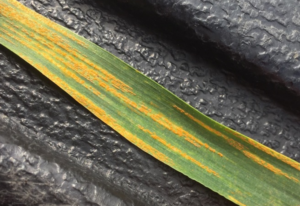
Over the last week stripe rust has been reported in several counties across North Carolina (Table 1). A stripe …

You may have European pepper moth in your nursery and not know it. They are hard to find because …

Crape myrtles have typically been almost maintenance free (unless you top them) but with the new crape myrtle bark …
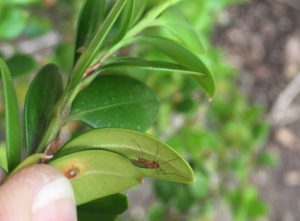
Amanda Taylor, Area Specialized Agent – Nursery and Greenhouse alerted us that Boxwood leafminer adults are active in the …

Maple shoot borers (Proteoteras aesculana) are common pests of red maples in nurseries. Amanda Taylor, Area Specialized Agent – …

We just got an alert from Amanda Taylor, Area Specialized Agent – Nursery and Greenhouse, that yellow poplar weevils, …

Felt scales are a family of scales that include azalea bark scale (Acanthococcus azaleae), crape myrtle bark scale (Acanthococcus …
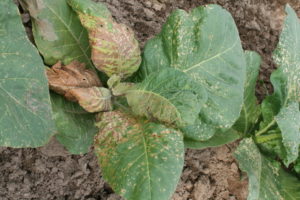
This is the third of our weekly TSWV and tobacco thrips risk assessment updates. Cool weather has continued to …
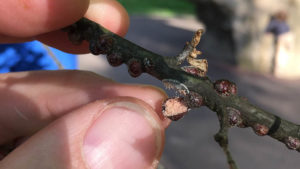
Oak lecanium scale and European fruit lecanium are nearly identical soft scales that infest oaks and many other tree …
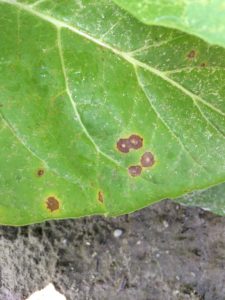
April 9, 2020- As upside down as the world seems right now, the 2020 tobacco season continues to march forward. …
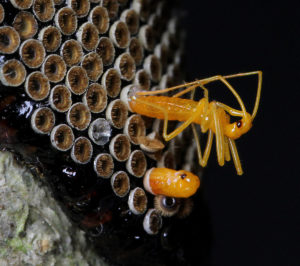
The wheel bug, Arilus cristatus, is North Carolina’s largest assassin bug. It gets its name from the prominent spiny …
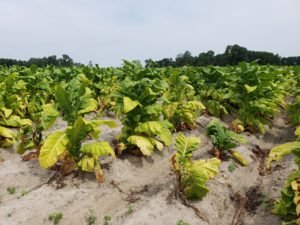
Managing tomato spotted wilt virus (TSWV) in North Carolina tobacco requires both pre transplant and post transplant decisions, which …

This global health crisis has certainly hit us all like a ton of bricks, and at the time of …
Chlorpyriphos is an organophosphate insecticide that has been the topic of recent regulatory review. The federal Environmental Protection Agency …
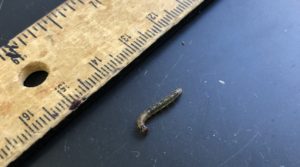
NC State Extension Area Specialized Agent Danny Lauderdale trapped the first European pepper moths last week. This is a …

Warm weather brings people outdoors for their spring lawn and garden activities. It also signals the start of carpenter …

Rain across many areas of North Carolina over the next few days followed by warmer temperatures will likely bring …
Julie Hayworth-Perman | NC State University Homegrown Putting off that home remodel or waiting until the right time to add …
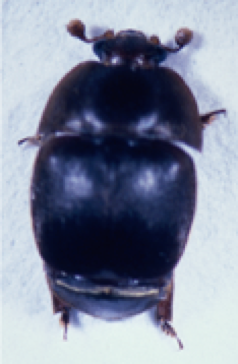
This factsheet describes the small hive beetle, its life cycle and how to prevent infestations …

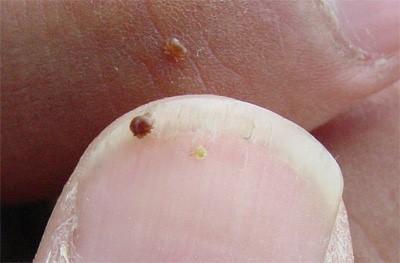
It is the goal of every beekeeper to maintain healthy, productive colonies. This can only …

This manual prepares pesticide applicators for Forest Pest Control Certification exams in the following states: …
To apply restricted-use pesticides to agricultural commodities, you must be certified or be supervised by …

This factsheet offers information on the biology and management of the emerald ash borer, an …

Black root rot impacts a range of woody and herbaceous ornamental plant species primarily in …

Whiteflies (Hemiptera: Aleyrodidae) are small (< 0.12 inch) and highly diverse insects that feed on …